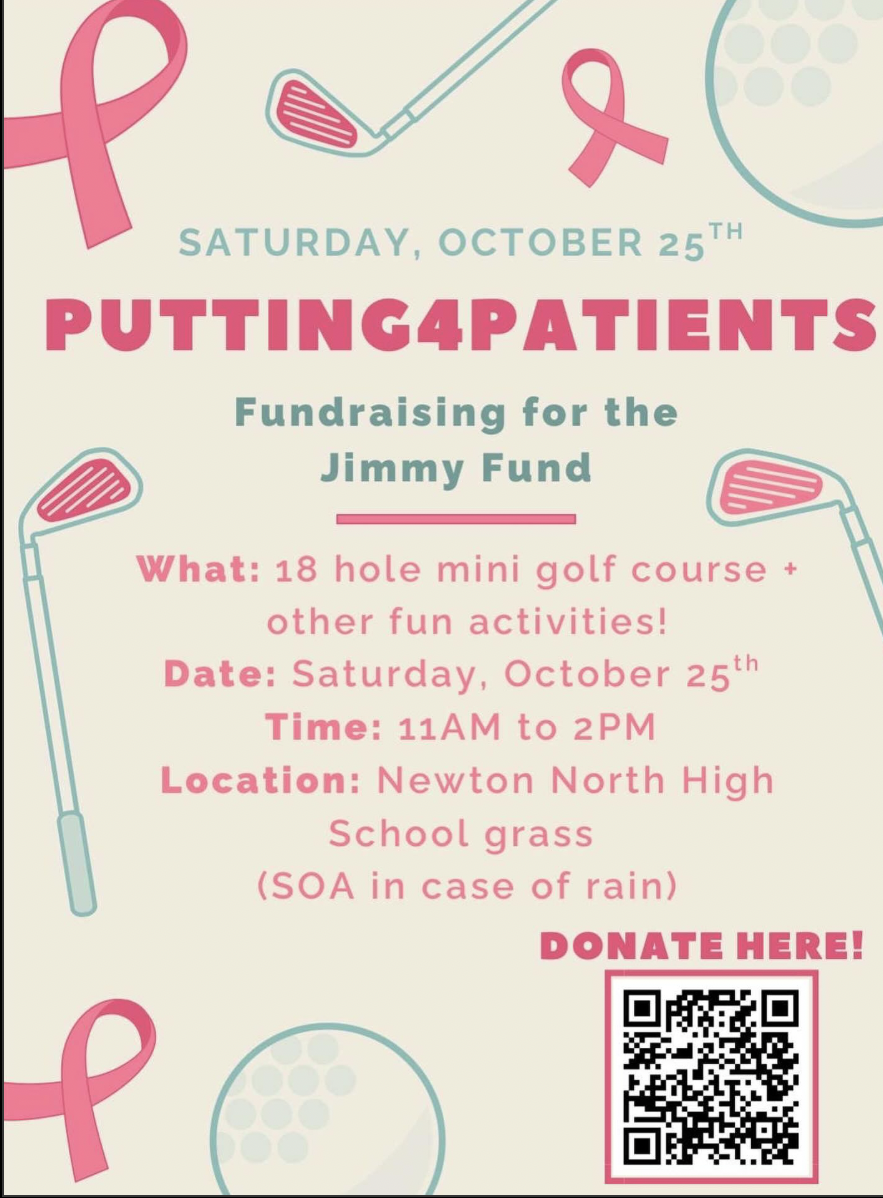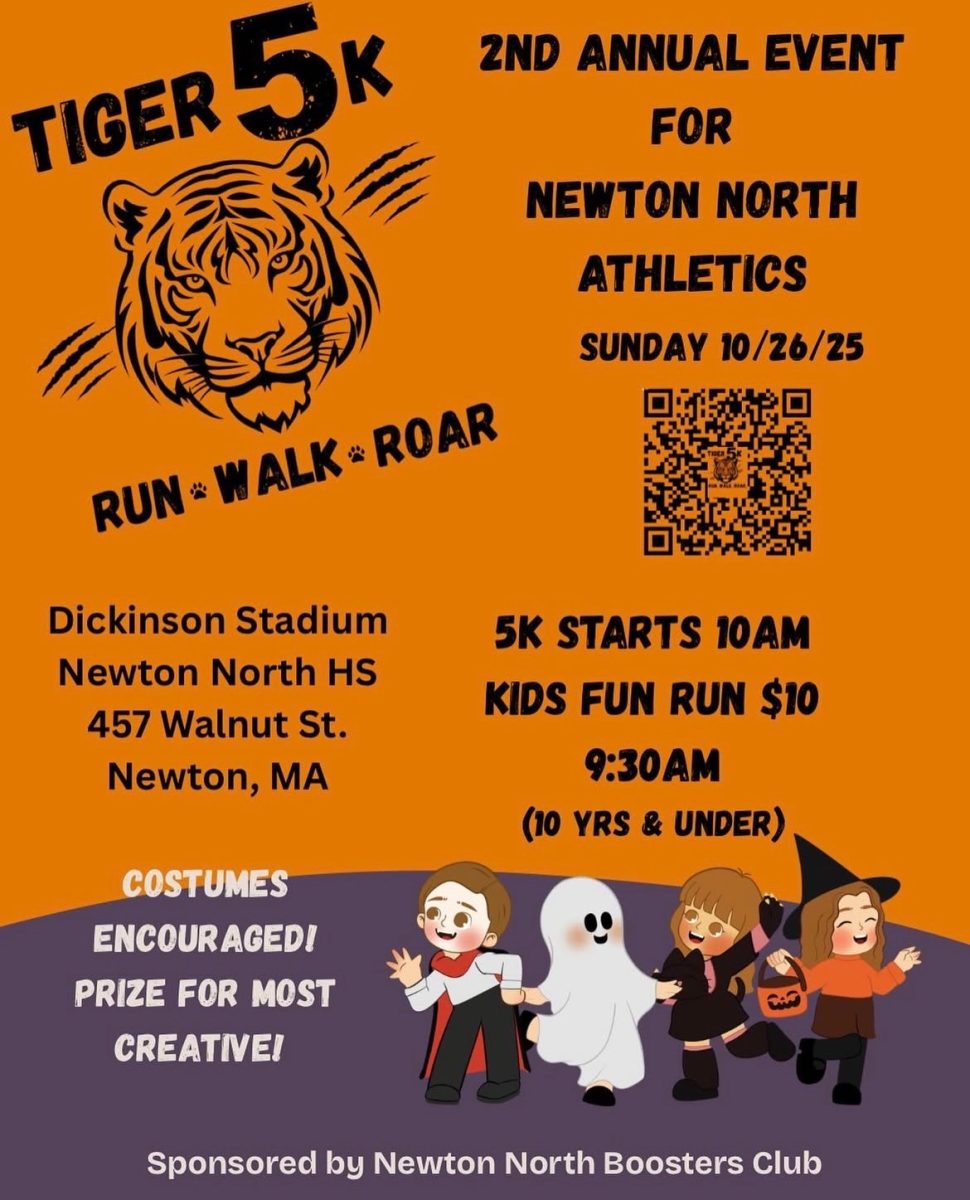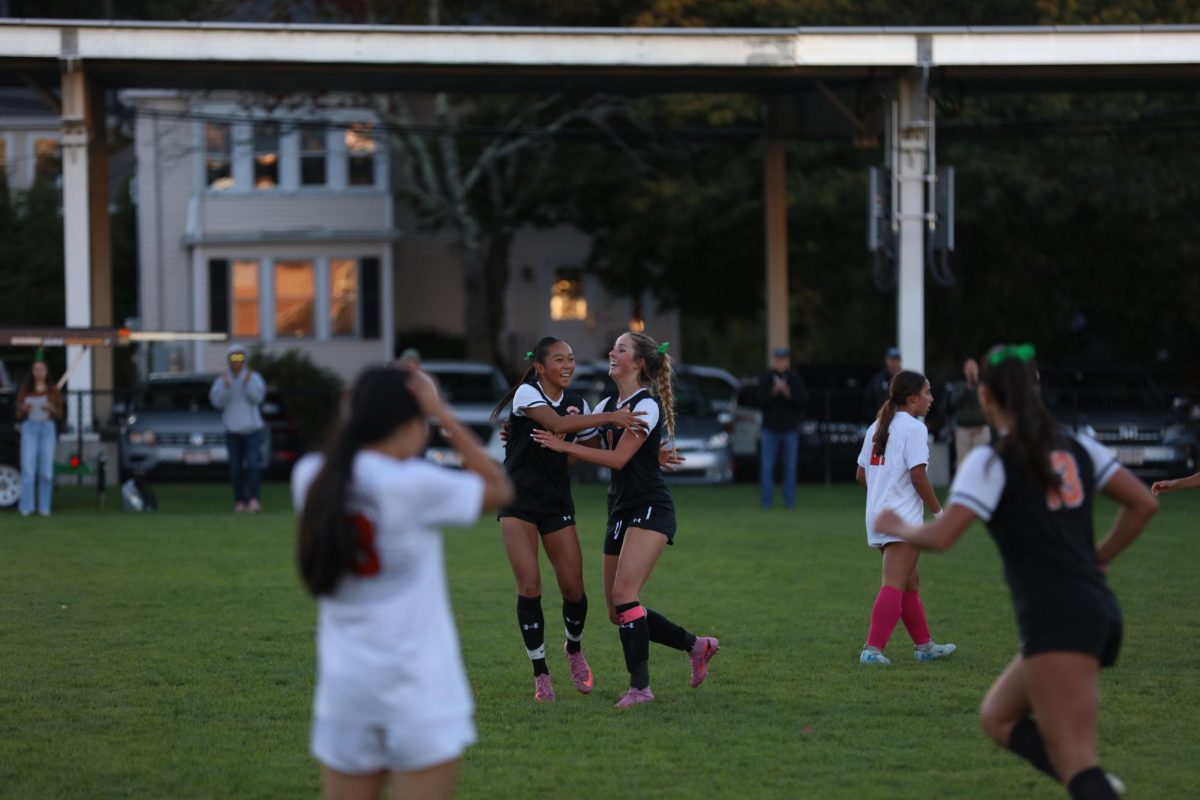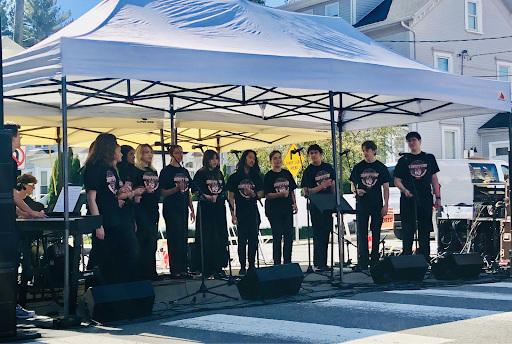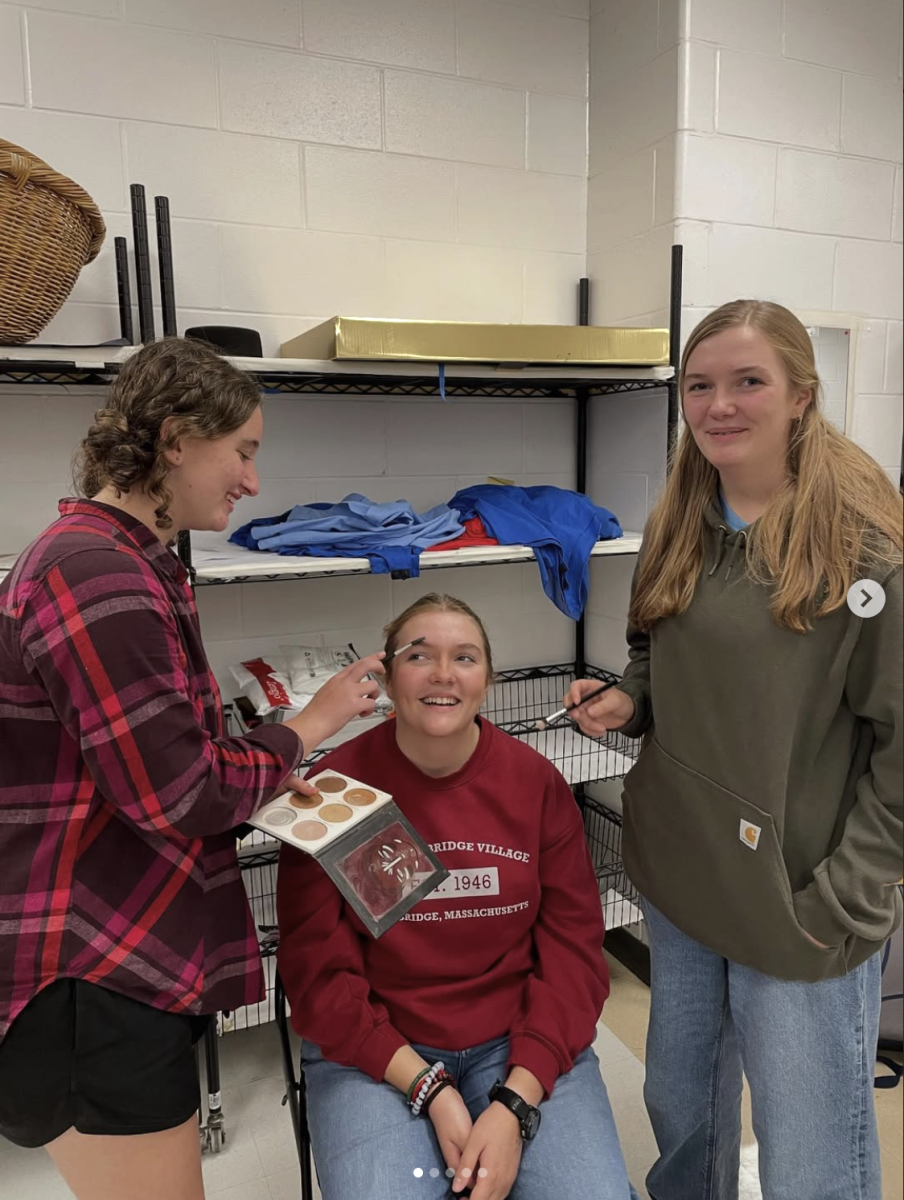 [/media-credit]
[/media-credit]
- Outside the auditorium, junior Shoshana Stanger hands out buttons and stickers to raise awareness about the LGBTQ community.
by Leah Budson
Popular. Asian. Hipster. Gay.
Labels surround us, inscribed on the clothes we wear, apparent in the words we speak. Everyone is subject to society’s stereotyping. People use as little as people’s voice or clothing to decide their sexual orientations.
Being educated in the meanings of labels and sexualities enables us to use them correctly and inoffensively. Believe the definition of a sexuality or label, but ignore the stereotype that discredits the term.
People are often labeled based on only one stereotypical trait, though the entire label does not accurately define them. For example, if a boy is an actor, he could be labeled as gay, and therefore given a dozen other traits that are likely invalid.
Labels are frequently misunderstood and used incorrectly when pertaining to sexuality. At our school, phrases similar to “that’s so gay” much too frequently float through the halls. Although it might feel like “just something we say,” those phrases are stereotypes that are in no way related to the actual meaning of the word “gay.”
Similarly, a guy can show stereotypical traits of being gay, and be completely straight. A girl can show no traits of being lesbian, but she should not be met with disbelief if she says she is. Using stereotypes as bases for labeling sexuality is unfair.
In addition, ignorance is the basis for all stereotypes. If all students understood what it means to be asexual or the difference between pansexuality and bisexuality, people might not feel the need to stereotype those sexualities.
To be educated is our responsibility. We owe it to our peers to try to understand parts of their identity, otherwise we could label them offensively or erroneously. As Martin Luther King, Jr., said, “Nothing in the world is more dangerous than sincere ignorance.”

